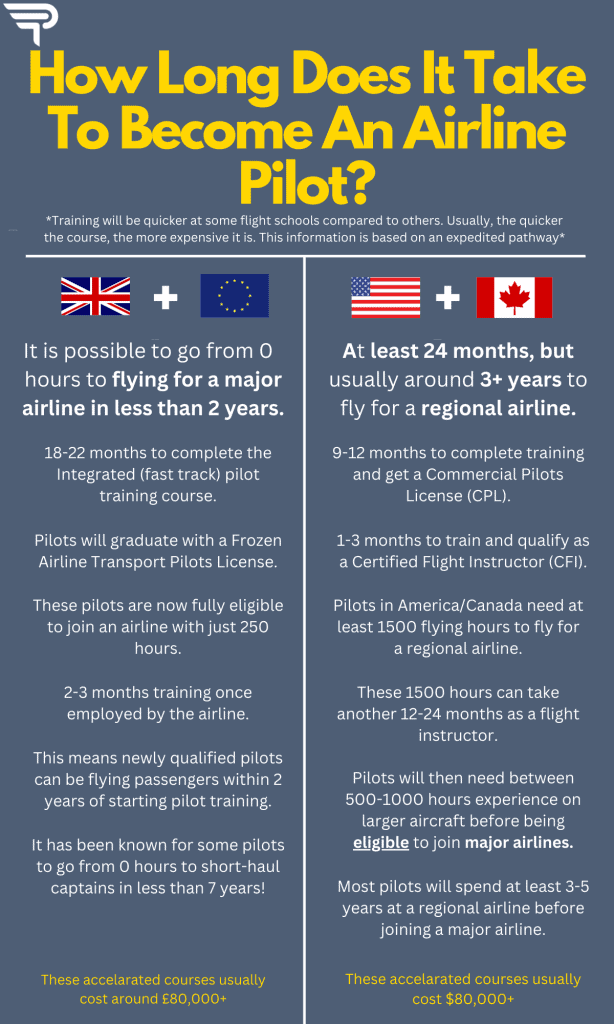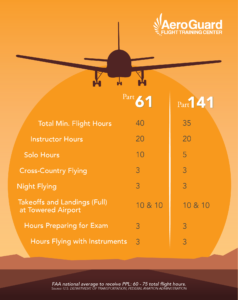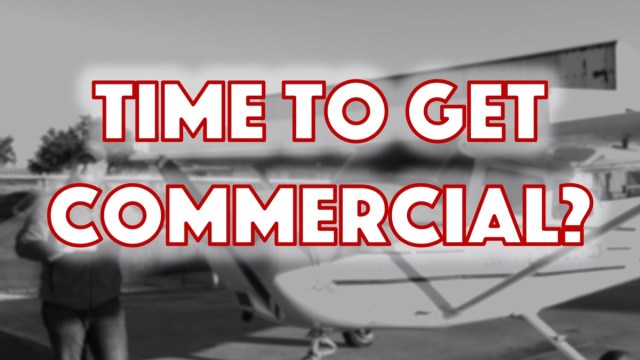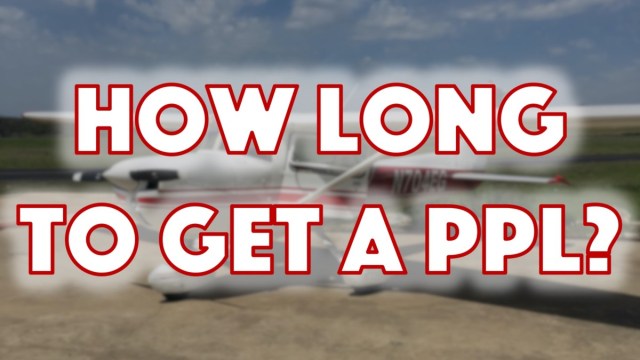So, you’ve got dreams of soaring through the skies and becoming a pilot, but you’re curious just how long it will take to obtain that coveted license. Well, buckle up and get ready for an exhilarating ride because we’re about to uncover the answer to that burning question: What is the shortest time to get a pilot’s license? Whether you’re a thrill-seeker or looking to pursue a career in aviation, we’ll break down the process and give you an insight into the possibilities that lie ahead. Get ready for takeoff!

This image is property of 883b86fe.flyingcdn.com.
Overview of Pilot’s License
Definition of pilot’s license
A pilot’s license is an official document issued by aviation authorities that grants the holder the legal authority to act as a pilot of an aircraft. It demonstrates that the individual has met the required knowledge, skill, and experience standards to operate an aircraft safely and responsibly. Obtaining a pilot’s license is a significant achievement for those who have a passion for aviation and aspire to fulfill their dreams of flying.
Types of pilot’s licenses
There are various types of pilot’s licenses, each with its own specific privileges and requirements. The four main types of licenses are:
-
Private Pilot License (PPL): This license allows you to fly for recreational or non-commercial purposes. It is the most common type of license sought by aspiring pilots.
-
Instrument Rating (IR): An IR is an additional rating that can be added to a pilot’s license. It enables pilots to fly under instrument flight rules (IFR), allowing them to navigate and operate an aircraft solely based on instruments rather than visual reference.
-
Commercial Pilot License (CPL): A CPL permits pilots to fly for compensation or hire. This license opens doors to career opportunities in commercial aviation, such as becoming a flight instructor, charter pilot, or working for an airline.
-
Airline Transport Pilot License (ATPL): The highest level of pilot’s license, an ATPL is required for pilots who wish to serve as captains or first officers of large commercial aircraft. It involves more rigorous training and experience requirements.
Requirements to obtain a pilot’s license
To obtain a pilot’s license, aspiring pilots must fulfill certain requirements set by the aviation authority of their country. These requirements generally include:
-
Age: Applicants must meet the minimum age requirement specified by the aviation authority. In many countries, the minimum age for a private pilot license is 17, while for a commercial pilot license, it is 18 or 21.
-
Medical Certificate: Pilots must pass a medical examination conducted by an authorized aviation medical examiner to ensure they meet the physical and mental fitness standards necessary for safe flying.
-
Knowledge and Ground Training: Prospective pilots must complete ground training and pass a written exam that covers subjects such as aviation regulations, navigation, meteorology, aerodynamics, and aircraft systems.
-
Flight Training: Pilots-in-training are required to log a minimum number of flight hours, which varies depending on the type of license. They must undergo practical flight training with a certified flight instructor who will guide them through various maneuvers and flight procedures.
-
Practical Test: After completing the required flight hours and demonstrating proficiency in various flight maneuvers, applicants must pass a practical test, commonly known as a checkride. This test involves a flight examination conducted by an authorized examiner to assess the pilot’s ability to operate an aircraft safely.
Factors Affecting Time to Obtain a Pilot’s License
Type of pilot’s license
The type of pilot’s license you are pursuing significantly influences the time it takes to obtain it. The private pilot license typically requires fewer flight hours compared to other licenses, making it more accessible and allowing individuals to attain it in a relatively shorter timeframe. On the other hand, advanced licenses like the airline transport pilot license have more stringent requirements, including a higher number of flight hours and extensive experience, which can extend the time needed for completion.
Prior experience and knowledge
The level of prior experience and knowledge in aviation plays a crucial role in determining the time it takes to obtain a pilot’s license. Individuals with a strong foundation in aviation, such as those with prior military flight experience or aviation-related academic qualifications, may have an advantage and be able to progress at a faster pace. However, even without prior experience, individuals can still obtain a pilot’s license by completing the necessary training and flight hours.
Availability of training
The availability of training opportunities can impact the time it takes to obtain a pilot’s license. Factors such as the proximity of flight schools, the availability of flight instructors, and the frequency of flight training slots can influence the speed at which individuals can complete their required flight hours. In regions with limited training resources, it may take longer to secure training slots, leading to a longer overall completion timeframe.
Individual commitment and dedication
Perhaps one of the most significant factors affecting the time to obtain a pilot’s license is the individual’s level of commitment and dedication. This includes factors such as the frequency of flight training, study habits, and the ability to balance other commitments with the demands of aviation training. Consistent training and dedication to studying aviation theory and practical skills can expedite the learning process and result in a shorter time to obtain the desired license.

This image is property of www.flyaeroguard.com.
Private Pilot License (PPL)
Description and purpose
The Private Pilot License (PPL) is often the starting point for aspiring pilots. It grants individuals the privilege to fly for recreational or non-commercial purposes, providing a foundation of aeronautical knowledge and flight skills. While the PPL does not allow pilots to fly for compensation or hire, it serves as a stepping stone for those who intend to pursue advanced ratings and licenses.
Training requirements
To obtain a PPL, aspiring pilots must meet the following training requirements:
-
Ground School: Candidates must complete a ground school course, which covers subjects such as aviation regulations, aerodynamics, meteorology, navigation, and aircraft systems. This theoretical knowledge prepares pilots for the written knowledge exam.
-
Written Knowledge Exam: Pilots-in-training must pass a written knowledge exam conducted by an authorized testing center or aviation authority. The exam evaluates their understanding of aviation theory and regulations.
-
Flight Training: Prospective pilots are required to log a minimum of 40-60 flight hours, including a specified number of hours of solo flight training, cross-country flights, and night flying experience. Flight training involves learning basic flight maneuvers, navigation skills, emergency procedures, and more.
-
Practical Test (Checkride): After completing the necessary flight hours and demonstrating proficiency in flying skills, pilots must pass a practical test, also known as a checkride. This test includes an oral examination and a flight examination conducted by an authorized examiner.
Estimated time to obtain a PPL
The time it takes to obtain a PPL can vary depending on a variety of factors. On average, it may take approximately 6-12 months to acquire a PPL. However, the timeframe can be shorter or longer depending on the individual’s availability for flight training, study habits, and commitment level.
Instrument Rating (IR)
Description and purpose
An Instrument Rating (IR) is an additional rating that enhances a pilot’s qualifications and opens up opportunities to fly under instrument flight rules (IFR). As opposed to visual flight rules (VFR), which rely on visual cues outside the aircraft, IFR allows pilots to navigate and operate an aircraft based solely on instruments, ensuring safety in low visibility or challenging weather conditions.
Training requirements
To obtain an IR, pilots must fulfill the following training requirements:
-
Ground School: Candidates must complete a ground school course specifically focused on instrument flying techniques, procedures, instrument navigation, and regulations related to IFR operations. This theoretical knowledge is crucial for instrument flying.
-
Written Knowledge Exam: Pilots must pass a written knowledge exam that covers instrument flying regulations, navigation procedures, meteorology, and instrument systems. The exam evaluates their understanding of the unique challenges and procedures associated with instrument flight.
-
Flight Training: Prospective pilots are required to log a minimum number of instrument flight hours, typically around 50-60 hours. This includes training in instrument cross-country flights, approaches, holds, departures, and more. Additionally, pilots must gain experience in specific weather conditions and practice flying solely by reference to instruments.
-
Practical Test (Checkride): After completing the required flight hours and demonstrating proficiency in instrument flying, pilots must pass a practical test conducted by an authorized examiner. This test includes both an oral examination and a flight examination to assess the pilot’s ability to safely operate an aircraft using instrument flight techniques.
Estimated time to obtain an IR
The time required to obtain an Instrument Rating may vary depending on individual circumstances and training availability. On average, it may take approximately 6-12 months to complete the necessary training and earn an IR. Factors such as frequency of flight training, weather conditions, and personal study habits can impact the overall timeframe.

This image is property of www.thrustflight.com.
Commercial Pilot License (CPL)
Description and purpose
A Commercial Pilot License (CPL) is the next step for pilots looking to turn their passion for flying into a career. This license allows pilots to fly for compensation or hire, providing opportunities in various sectors of the aviation industry. With a CPL, pilots can become flight instructors, work as charter pilots, or pursue flying positions with airlines.
Training requirements
To obtain a CPL, pilots must fulfill the following training requirements:
-
Ground School: Candidates must complete an advanced ground school course that covers subjects such as advanced aviation meteorology, advanced navigation, aviation regulations, and advanced aerodynamics. This theoretical knowledge equips pilots with the additional skills required for commercial flying.
-
Written Knowledge Exam: Pilots-in-training must pass a written knowledge exam that assesses their understanding of commercial aviation regulations, advanced navigation techniques, meteorology, and aircraft performance. The exam focuses on the specific knowledge required for commercial flight operations.
-
Flight Training: Prospective commercial pilots are required to log a minimum of 150-250 flight hours, depending on the aviation authority’s requirements. This includes refining their flight skills, advanced maneuvers, cross-country flights, and night flying experience. Additionally, pilots must gain experience in operating more complex aircraft and develop proficiency in commercial flight operations.
-
Practical Test (Checkride): After completing the required flight hours and demonstrating proficiency in commercial flight operations, pilots must pass a practical test conducted by an authorized examiner. The checkride includes both an oral examination and a flight examination, evaluating the pilot’s ability to safely operate an aircraft in commercial scenarios.
Estimated time to obtain a CPL
The time needed to complete the training and obtain a CPL can vary significantly depending on the individual’s circumstances and training availability. On average, it may take approximately 12-24 months to fulfill the requirements and earn a CPL. Factors such as training intensity, financial resources, and personal dedication can influence the overall timeline.
Airline Transport Pilot License (ATPL)
Description and purpose
The Airline Transport Pilot License (ATPL) is the highest level of pilot’s license, empowering pilots to serve as captains or first officers on large commercial aircraft. This license denotes the pinnacle of a pilot’s career and is a requirement for flying with airlines and other commercial airlines.
Training requirements
To obtain an ATPL, pilots must fulfill the following training requirements:
-
Ground School: Candidates must complete an advanced ground school program that covers subjects such as advanced aerodynamics, airline operations, advanced aircraft systems, crew resource management (CRM), and more. This specialized knowledge prepares pilots for the complexities of airline operations.
-
Written Knowledge Exam: Pilots are required to pass a comprehensive written knowledge exam that encompasses advanced aviation regulations, advanced aircraft systems, airline operations, high altitude aerodynamics, and more. The exam evaluates their understanding of the complex aspects of airline flying.
-
Flight Training: Prospective airline pilots must log a significant number of flight hours, usually totaling 1,500-2,500 hours, depending on the aviation authority’s regulations. This involves gaining experience in a multi-crew environment, operating high-performance aircraft, and practicing airline procedures, including simulated emergencies and abnormal situations.
-
Practical Test (Checkride): The final step towards obtaining an ATPL is passing a rigorous practical test conducted by an authorized examiner. The checkride includes both an oral examination and a flight examination, evaluating the pilot’s competency in airline operations, crew management, decision-making, and handling complex flight scenarios.
Estimated time to obtain an ATPL
The duration required for ATPL training can vary significantly depending on the individual’s circumstances, the availability of training programs, and other factors. On average, it may take several years, ranging from 2-5 years, to accumulate the required flight hours and fulfill the training requirements for an ATPL. The extensive experience and knowledge required make it a demanding process, but the end result is a license that opens up career opportunities at the highest level of commercial aviation.

This image is property of i0.wp.com.
Accelerated Flight Training Programs
Overview of accelerated training
Accelerated flight training programs offer an intensive and focused approach to pilot training, aiming to condense the time required to obtain a pilot’s license. These programs are designed to provide a more concentrated and efficient learning experience by offering dedicated flight and ground training within a shorter timeframe. They often involve full-time commitment, with participants dedicating a significant portion of their time solely to flight training.
Benefits and drawbacks of accelerated training
Accelerated flight training programs offer several benefits that appeal to individuals seeking a faster route to obtaining a pilot’s license. These benefits include:
-
Time Efficiency: Accelerated programs condense the training period, enabling aspiring pilots to obtain their licenses in a shorter timeframe compared to traditional training methods.
-
Intensive Focus: With a concentrated program structure, accelerated training allows for more focused and uninterrupted learning, resulting in improved retention of knowledge and skills.
-
Immersive Training Environment: By dedicating extensive time to training, participants are immersed in the aviation environment, enhancing their understanding of aviation operations and fostering rapid skill development.
However, it is important to consider the potential drawbacks of accelerated training. These may include:
-
Intensity and Fatigue: The compressed schedule of accelerated training can be mentally and physically demanding. Participants may experience increased stress and fatigue due to the immersive and intensive nature of the program.
-
Limited Flexibility: Accelerated programs often require participants to commit to a fixed schedule, leaving less room for flexibility or accommodating other personal or professional commitments.
-
Pace and Learning Curve: The accelerated learning pace may not suit everyone, and some individuals may find it challenging to keep up with the condensed training schedule, leading to a less comprehensive understanding of certain concepts.
Factors influencing completion time
The completion time of an accelerated flight training program depends on various factors. These include:
-
Prior Experience: Individuals with prior flight experience or knowledge may be able to progress through the program more quickly, as they may have a head start in certain areas of training.
-
Availability of Resources: The availability of training resources, such as aircraft and certified flight instructors, can impact the speed at which students can progress through the program.
-
Individual Aptitude and Commitment: The ability to grasp concepts quickly and the level of dedication and commitment to focused training can influence the completion time.
-
Weather Conditions: Weather conditions can significantly impact flight training, and adverse weather conditions may lead to delays or the rescheduling of flight lessons.
Training Institutions and Flight Schools
Choosing the right training institution
Selecting the right training institution is crucial for obtaining a pilot’s license efficiently and effectively. Consider the following factors when choosing a training institution:
-
Accreditation and Reputation: Ensure the training institution is accredited by the aviation authority to provide pilot training. Additionally, research the institution’s reputation within the aviation community, considering factors such as success rates, alumni achievements, and reviews from former students.
-
Facilities and Resources: Evaluate the institution’s training facilities, including aircraft availability, maintenance standards, simulation technology, and the quality of training materials. Adequate resources enhance the learning experience and contribute to efficient training.
-
Instructor Qualifications: The qualifications and experience of flight instructors play a vital role in the quality of pilot training. Look for institutions with highly experienced and certified flight instructors who are knowledgeable, patient, and dedicated to their students’ success.
-
Training Programs and Curriculum: Review the training programs and curriculum offered by the institution. Ensure they align with your specific goals and requirements, providing a comprehensive and structured learning experience.
Factors to consider in selecting a flight school
In addition to the training institution, selecting the right flight school is equally important. Consider the following factors when choosing a flight school:
-
Location: Evaluate the flight school’s location and proximity to your residence. Choosing a flight school near your home can minimize commuting time and make it easier to allocate sufficient time for flight training.
-
Availability of Flight Hours: Check the flight school’s availability and schedule for flight training slots. Ensure that they can accommodate your preferred training frequency and have a sufficient number of aircraft and instructors to meet the demand.
-
Training Fleet and Maintenance: Assess the flight school’s training fleet, as well as the maintenance standards and practices followed. A well-maintained fleet minimizes the likelihood of aircraft downtime, ensuring maximum training efficiency.
-
Safety Record: Research the flight school’s safety record and any incidents or accidents in their training history. A flight school with a strong safety culture and a clean safety record is essential for your peace of mind and overall safety.
Impact of training institution on license attainment time
The choice of training institution and flight school can significantly impact the time it takes to obtain a pilot’s license. An institution with experienced instructors, well-maintained aircraft, and a comprehensive curriculum can provide efficient training, allowing students to progress at an optimal pace. In contrast, a poorly organized or ill-equipped training institution may lead to delays, retraining, and a longer overall completion time. Therefore, selecting a reputable training institution and flight school is crucial for expediting the license attainment process.

This image is property of i0.wp.com.
Realistic Timeframes for License Completion
General timeframes for each type of license
While the actual timeframe for obtaining a pilot’s license is influenced by various factors, including those mentioned earlier, here are general timeframes for each type of license:
-
Private Pilot License (PPL): On average, it may take approximately 6-12 months to obtain a PPL, provided the individual can commit to regular flight training and study efforts.
-
Instrument Rating (IR): The time required to earn an IR ranges from 6-12 months on average. Intensive and focused training can expedite the process.
-
Commercial Pilot License (CPL): Aspiring commercial pilots often spend approximately 12-24 months obtaining a CPL, considering the additional flight hours, advanced theory, and increased training complexity.
-
Airline Transport Pilot License (ATPL): The time needed to obtain an ATPL can span several years, with an average completion time of 2-5 years due to the extensive flight hours, advanced knowledge, and experience requirements.
Factors that may increase or decrease completion time
Several factors can influence the completion time of obtaining a pilot’s license. These factors can either increase or decrease the overall timeframe:
-
Availability and Frequency of Training Slots: A greater availability of flight training slots can allow for more frequent lessons, accelerating the completion time. Conversely, limited availability may lead to delays.
-
Personal Time Commitment: A higher frequency of flight training, coupled with consistent study habits and dedication to the learning process, can contribute to a shorter completion time.
-
Weather Conditions: Adverse weather conditions or seasonal limitations may affect flight training availability, potentially leading to delays.
-
Financial Resources: Sufficient financial resources to cover training costs, such as flight hours, theory materials, and examinations, can prevent interruptions and facilitate a smoother progression.
-
Learning Aptitude: Individuals with a natural aptitude for aviation and quick grasping of concepts may progress through the training process more rapidly, shortening the overall timeframe.
Examples of shortest timeframes achieved
While individual circumstances vary, it is worth noting that some dedicated and focused individuals have achieved significantly shorter timeframes for obtaining pilot’s licenses. In exceptional cases, highly motivated candidates who are able to allocate extensive time and resources to training have been known to complete their PPL in as little as 3-6 months. However, these instances are not the norm, and the average completion timeframes mentioned earlier should be considered as more representative of the training process.
Tips for Efficient License Acquisition
Setting clear goals and timelines
Establishing clear goals and timelines from the outset is essential for efficient license acquisition. Define your objectives, plan your training milestones, and establish realistic timelines for achieving each step of the process. Breaking down the training requirements into manageable goals allows for a more focused approach, enabling you to measure progress and maintain motivation throughout the journey.
Developing a structured study and practice routine
Consistency is key in pilot training. Develop a structured routine for studying aviation theory, whether through ground schools, self-study materials, or online courses. Allocate regular time for flight training, ensuring a consistent and frequent practice schedule. A structured routine promotes efficient learning and skill development, leading to faster progress in license acquisition.
Utilizing resources and support
Make the most of available resources and support systems to enhance your training experience. Seek guidance from certified flight instructors and experienced pilots, leveraging their expertise to clarify doubts and improve understanding. Additionally, tap into aviation communities and industry networks, attending seminars, workshops, and aviation events to foster connections and gain valuable insights.
Maintaining discipline and perseverance
Obtaining a pilot’s license requires dedication and perseverance. Stay motivated and disciplined throughout the training process, even when faced with challenges or setbacks. Embrace the learning curve, recognize each milestone achieved, and maintain focus on the end goal. By staying committed and persevering through the ups and downs, you can expedite the time it takes to obtain your pilot’s license.
In conclusion, obtaining a pilot’s license is an exciting and rewarding journey that requires time, effort, and dedication. The type of license, prior experience, availability of training, and individual commitment all play significant roles in determining the time it takes to obtain the desired license. By selecting the right training institution, flight school, and adopting effective strategies, you can optimize the training process and achieve your pilot’s license efficiently and confidently. Remember to set clear goals, develop a structured routine, utilize available resources, and maintain discipline throughout the journey. With time and perseverance, you will soar through the skies as a licensed pilot, fulfilling your dreams of flying.
